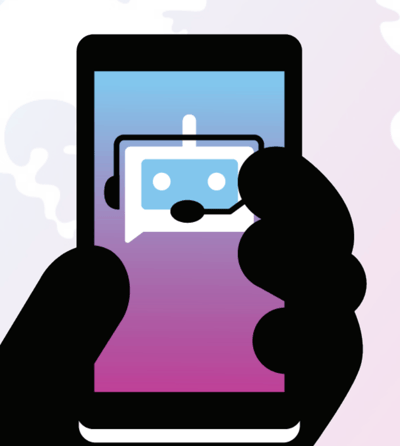Real-Life Applications for the Vonage Video API Linux SDK
The SDKs make our Video API more tangible and bring it closer to what you can see and interact with in your products. Let’s tap into our inventor side and explore some real-life applications for the Vonage Video API Linux SDK.
The Inventor in All of Us
In a recent post, I introduced an exciting new addition to the client SDK lineup for the Vonage Video API—Linux SDK. I also channeled my inner inventor to create useful things for many aspects of daily life. And though I don’t reach for my soldering iron quite as often, the software tools I do use today still make a lasting impression.
As one of the product owners for Vonage Video SDKs, I think a lot about the implementation details and common pain points our customers encounter when building with video on native apps. However, in this post, I get to shift gears and explore the cool solutions these implementations eventually become, especially in the world of IoT and embedded applications.
Let’s take a look!
Connected Home
The need to connect to the outside world from home has never been greater. And the powerful connectivity and real-time engagement allow customers to do just that.
Smart Doorbells and Security Cameras
Live video, two-way chat, and motion-activated notifications are all packed in a sleek household doorbell that also syncs to cloud storage and lets owners watch and interact with visitors remotely.
Social distancing practices have greatly accelerated the adoption of smart doorbells. While Wi-Fi-connected security cameras have been on the market for over a decade, only recently would someone expect to know about a package arriving through a video sent from their doorbell.
Connected Home Gym
While many of us miss our gym routine and casual social interactions that came with it, some of us have found refuge in creating new at-home routines. Sales of personal gym equipment, like Peloton and Mirror, have been on the rise as home gyms are experiencing a major renaissance fueled by circumstances, and also by video.
This new gym equipment enables you to see your trainer and classmates, stay motivated, and meet your goals. Your trainer can still critique your form over video and also receive real-time information on your effort, heart rate, and calorie burn.
Knowing that our SDKs are letting these innovators focus on the awesome equipment they build—rather than the details of creating scalable video and keeping up with OS updates—is one of the best parts of my job and how I can “pass it on” as an innovator.
 GLOBAL RESEARCH STUDY
GLOBAL RESEARCH STUDY
Industrial Applications
As we look beyond the consumer, there are a host of applications which are outside the all-too-familiar “videoconferencing” experience. The Vonage platform enables video and data messages to be sent or recorded in near real-time. Sensor data can even be embedded within the metadata for individual frames, synchronizing the data and video feed for accurate monitoring of offsite processes or automation.
While some of our customers have accomplished this by using gateways and servers, the Linux SDK introduces the possibility of the devices themselves being able to autonomously report back to an operations control center or request human intervention when an issue is detected. A remote operator would then be able to verify proper operation or intervene remotely if necessary.
Getting goods across the city or country requires fleets of well-coordinated trucks. To ensure the right drivers are behind the wheel, industrial versions of the dash camera—similar to what you might see in a car—snap a photo or video clip of the driver and compare it to a company’s employee driver database. The camera records sensor data from the truck such as speed, distance traveled, time between stops, and fuel used to ensure that trucks are on time and drivers are taking required rest breaks.
Application developers can then use this information to schedule vehicle service, plan routes, estimate arrival times, and keep logs for federal and state regulations. Vonage Video handles getting the video from these devices to the developer's servers, and the Linux SDK allows this to be done without requiring an additional laptop or other computer.
Medical Robotics
Video built into medical devices brings in experts from anywhere in the world to analyze and consult.
Intuitive Surgical relies on video to connect the operators of their Da Vinci Remote Surgical System to remote experts worldwide. Thanks to a face-to-face connection, tens of thousands of surgeons are expanding their capabilities with assistance of remote experts. Meanwhile, their team of application engineers is free to focus on meeting customer needs, without worrying about how to send video across continents or keeping current with browser and OS updates.
Autonomous Delivery Robots
Autonomous delivery robots leverage machine learning models to navigate a route to their destination. Cameras interpret the surroundings, while their software dictates which direction to go, when to stop, or how to avoid obstacles.
The small, four-wheeled Kiwibot robots get dispatched to restaurants and stores when customers order from their phone using a mobile app. Their purchases are placed in the robot’s top loading receptacle. Then, with the help of the Vonage Video API, the robot navigates local streets and delivers the order to the customer’s door. The customer opens the hatch of the receptacle through their mobile phone and retrieves the order. It’s that simple.
Sometimes, these robots get stuck or encounter an obstacle they have not learned to navigate. Rather than send someone to their location, Vonage Video connects these robots with a human who can help guide them from anywhere in the world. Now the robots can resume their journey and complete the special delivery.
Video Kiosks
In the 1970s, the automated teller machine revolutionized banking by providing after-hours convenience and easier access to your money. Wouldn’t it be great if the experience was a little more human? What if you have questions? Vonage Video API enables customers to incorporate live people into any app or website, and the Linux SDK makes it possible on more devices than ever before.
For example, a retail kiosk can connect you with a personal stylist, give you a preview of what the clothes would look like on you, have them tailored to your measurements, and arrange for pickup in a few days.
Automotive Robotics
Dashboard cameras record what drivers see in order to keep a record of driver safety and vehicle surroundings.
Now adding cellular connectivity and Vonage Video to these devices allows owners to verify their vehicle’s surroundings remotely and get instantly notified of unexpected vehicle motion or impact. With session archiving, the device transmits the audio and video recordings instantly to the cloud for storage, ensuring that any would-be thieves get their 15 minutes of fame and do not get to the recordings if they happen to break into a connected vehicle.
Video Composition and Session Moderation
In addition to enabling a wide array of devices we just discussed, there are further use cases enabled by the Linux SDK running on servers. For example, the server can perform any of the following actions:
- Composition: A server may receive multiple streams and allow an operator to compose them together in real-time, creating a full production-quality output stream for broadcast or recording
- Moderation: When users join a video session as a silent observer, advanced machine learning and computer vision models serve in place of a human moderator to ensure participants don’t engage in misconduct, while also providing a level of privacy
- Sharing: Content can be securely shared between stakeholders
Adding the Linux SDK to our lineup allows you to run reliable, real-time video on platforms never possible before, and I can’t wait to see what you build with it.
Videoconferencing: Where Next? 🌳📬🚀
With the world of computing extending beyond mobile and desktop—and an increasing number of embedded devices able to connect to the internet—the Linux SDK enables today’s brave creators to build customer journeys beyond browsers and add a new chapter to live, interactive video storytelling.
For now, thanks to the Vonage Video SDK for Linux, it’s time to bring your ideas to life. Sign up for a free account or contact our API team to get started!

